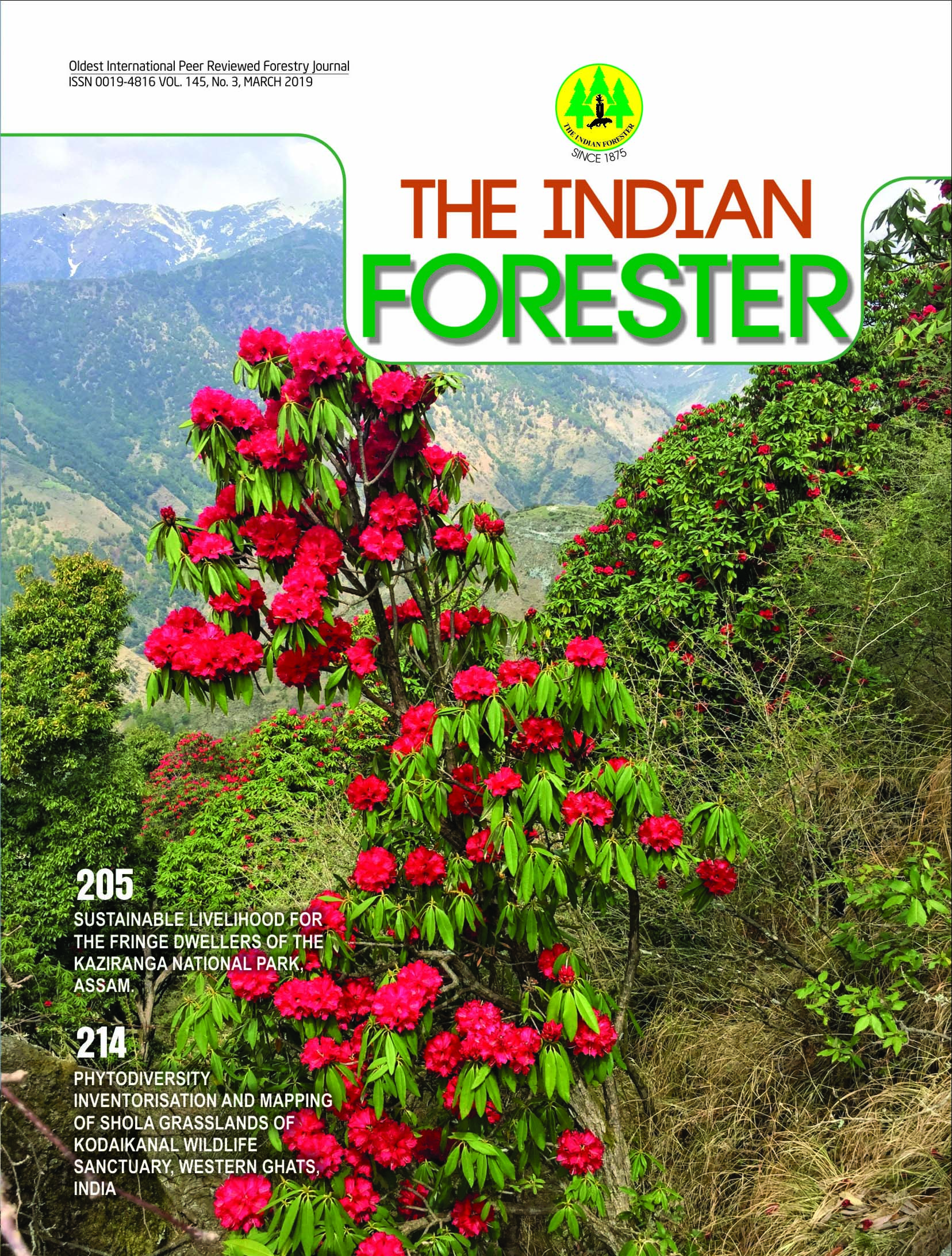Genetic Diversity Analysis in Grevillea robusta using ISSR Molecular Markers
DOI:
https://doi.org/10.36808/if/2019/v145i3/144477Keywords:
Grevillea robusta, ISSR, Genetic Diversity, Genetic Improvement, Principal Coordinate Analysis.Abstract
The present study aimed to analyze genetic diversity using inter simple sequence repeat (ISSR) molecular markers among eleven genotypes of Grevillea robusta collected from Haridwar, Uttarakhand. Out of the total 108 bands generated with 11 ISSR primers, 104 were found to be polymorphic. The percentage of polymorphic bands at genetic level was 96.30%. The mean value of expected heterozygosity and unbiased heterozygosity were 0.290 and 0.305, respectively. Jaccard's similarity value ranged from 0.398 to 0.790. The Unweighted Pair Group Method with Arithmetic Mean (UPGMA) clustering segregated the genotypes into two major clusters based on the pair-wise similarity coefficient. Clustering pattern revealed by UPGMA dendrogram was also supported by Principal Coordinate Analysis (PCoA). In the PCoA plot, 26.76% and 17.16% of total genetic variation were accounted by first and second coordinate, respectively. The higher level of genetic diversity was revealed by the values 0.445 ± 0.20 and 0.290 ± 0.16 recorded as Shannon's Information Index (I) and expected heterozygosity (H ), respectively. Therefore, the present E study reflects that a sufficient variability exist in the sampled germplasm and genetic improvement work could be very much effective in G. robusta for utilization in future agroforestry programme of the country.References
Doyle J.J. and Doyle J.L. (1990). Isolation of plant DNA from fresh tissue. Focus, 33(1):13-15.
England P.R., UsherA.V.,Whelan R.J. and Ayre D.J. (2002). Microsatellite diversity and genetic structure of fragmented populations of the rare, fire-dependent shrub Grevillea macleayana. Molecular Ecology, 11(6):967-977.
Hevroy T.H., Krauss S.L., Moody M.L. and Gardner M.G. (2013). Isolation, via 454 sequencing, characterization and transferability of microsatellites for Grevillea thelemanniana subsp. thelemanniana and cross-species ampli?cation in the Grevillea thelemanniana complex (Proteaceae). Conservation Genetic Resources, 5:887-890.
Hevroy T.H., Moody M.L. and Krauss S.L. (2017). Population genetic analysis reveals barriers and corridors for gene flow within and among riparian populations of a rare plant. AoB Plants, 10(1): plx0654.
India State of Forest Report (2017). Forest Cover 2017, Forest Survey of India.
Javan Z.S., Rahmani F. and Heidari R.(2012). Assessment of genetic variation of genus Salvia by RAPD and ISSR markers. Australian J. Crop Science, 6(6):1068-1073.
Llorens T.M., Ayre D.J. and Whelan R.J.(2004). Evidence for ancient genetic subdivision among recently fragmented populations of the endangered shrub Grevillea caleyi (Proteaceae). Heredity, 92:519-526.
Luna R.K. (2005). Plantation Trees. International Book Distributors. 397-399.
Millar M.A.,Coates D.J., Byrne M. and Roberts J.D. (2014). Characterization of microsatellite DNA markers for Grevillea paradoxa (F. Muell). Conservation Genetic Resources, 6:139-141.
Nistelberger H.M., Byrne M., Coates D. and Roberts J.D. (2015). Phylogeography and population differentiation in terrestrial island populations of Banksia arborea (Proteaceae). Biological J. Linnean Society, 114:860-872.
Orwa C., Mutua A., Kindt R., Jamnadass R. and Anthony S. (2009). Agro forestry Database: a tree reference and selection guide version 4.0.
Peakall R. and Smouse P.E. (2006). Gen Al Ex 6: Genetic Analysis in Excel. Population Genetic Software for Teaching and Research. Molecular Ecology Notes, 6:288-295.
Pharmawati M., Yan G. and Mcfarlane I.J. (2004). Application of RAPD and ISSR markers to analyze molecular relationships in Grevillea (Proteaceae). Australian Systematic Botany, 17:49-61.
Tatikonda L., Wani S.P., Kannan S., Beerelli N., Sreedevi T.K., Hoisington D.A., Devi P. and Varshney R.K. (2009). AFLP-based molecular characterization of an elite germplasm collection of Jatropha curcas L., a biofuel plant. Plant Science, 176:505-513.
Troup R.S.(1921). Silviculture of Indian Trees. Volume III. 798.
World Agroforestry Centre (2002). Agroforestry Tree Database. Nairobi, Kenya: ICRAF. http://www.worldagro forestrycentre.org/ Sites/TreeDBS/AFT/AFT.htm.
Yeh F.C., Yang R.C. and Boyle T.B.J. (1999). Pop Gene Version 1.31: Microsoft windows-based Freeware for Population Genetic Analysis. University of Albert, Edmonton. http://www.ualbert.ca/fyeh/
Downloads
Downloads
Published
How to Cite
Issue
Section
License
Unless otherwise stated, copyright or similar rights in all materials presented on the site, including graphical images, are owned by Indian Forester.





